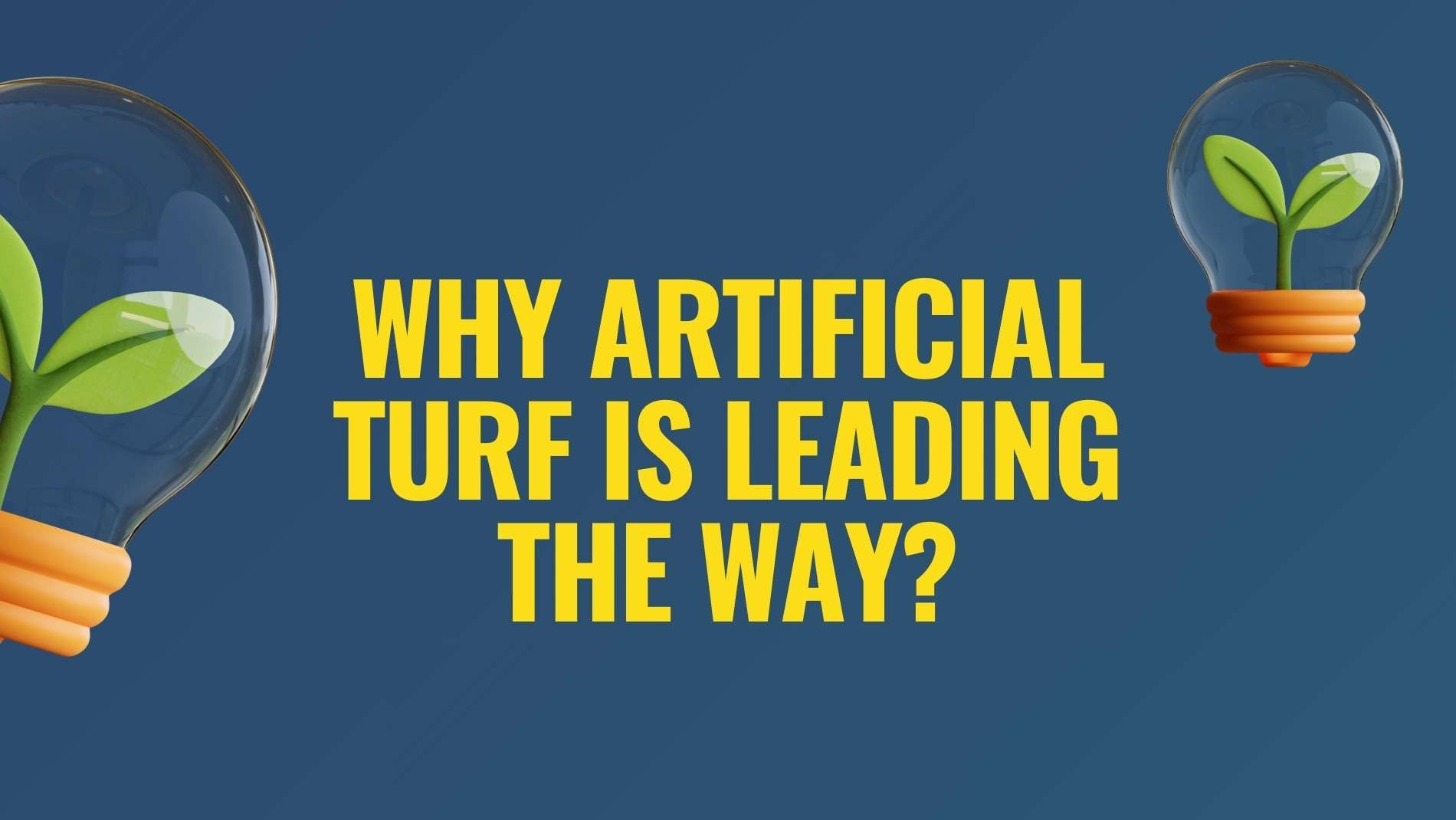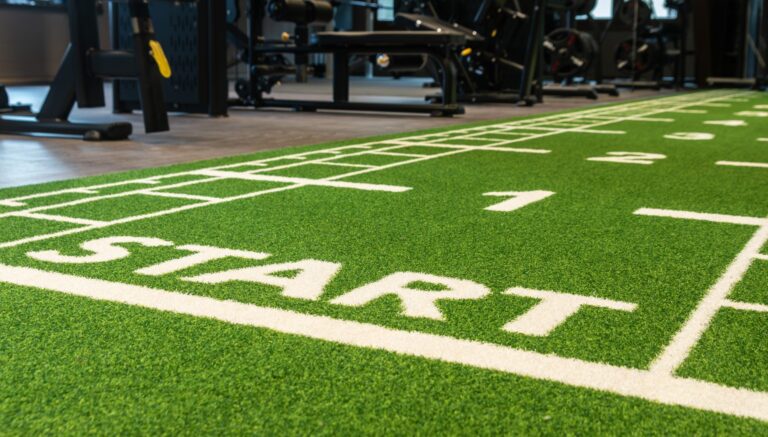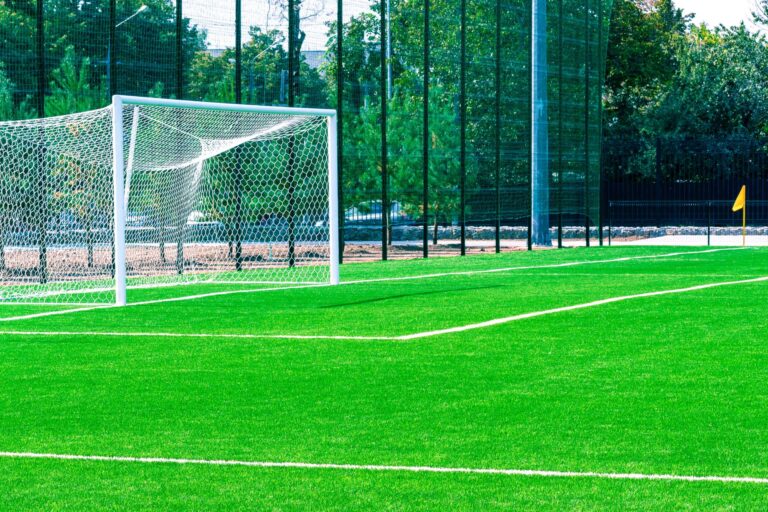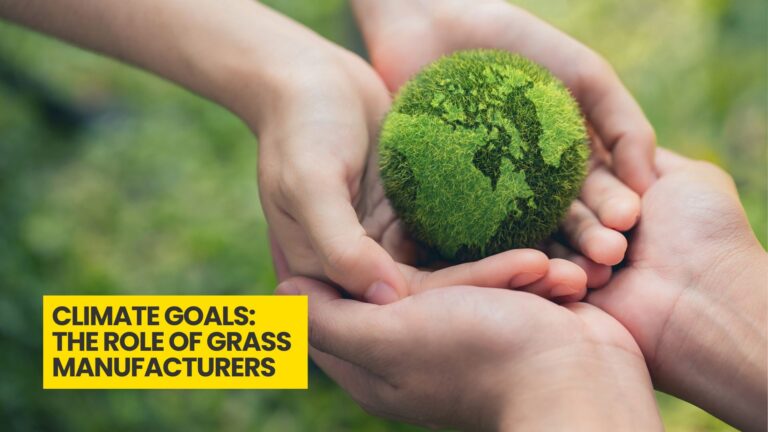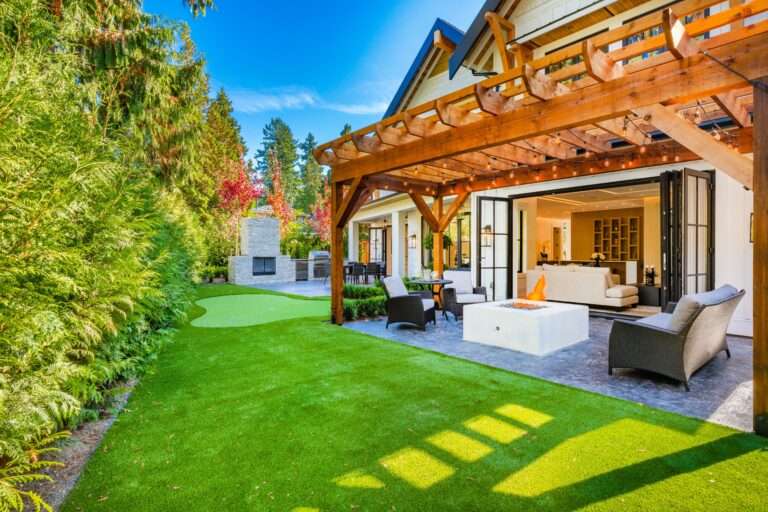The Future of Landscaping
Greater accessibility
Artificial turf can be used all year round, regardless of the weather conditions. Unlike natural grass, which becomes unusable after a few days of rain or heavy use and suffers in times of drought, artificial turf remains playable and safe for athletes and families alike. This longevity is particularly beneficial for multipurpose sports fields, as different sports can be played on a single surface. In addition, synthetic turf improves accessibility for communities by providing a durable, low-maintenance playing surface that would otherwise be unaffordable or impractical.
This article was inspired by the Synthetic Turf Council and includes data from the US market. As we’re an STC member, we believe this information needs to be widely spread to illustrate the direction of the landscape and sports industry.
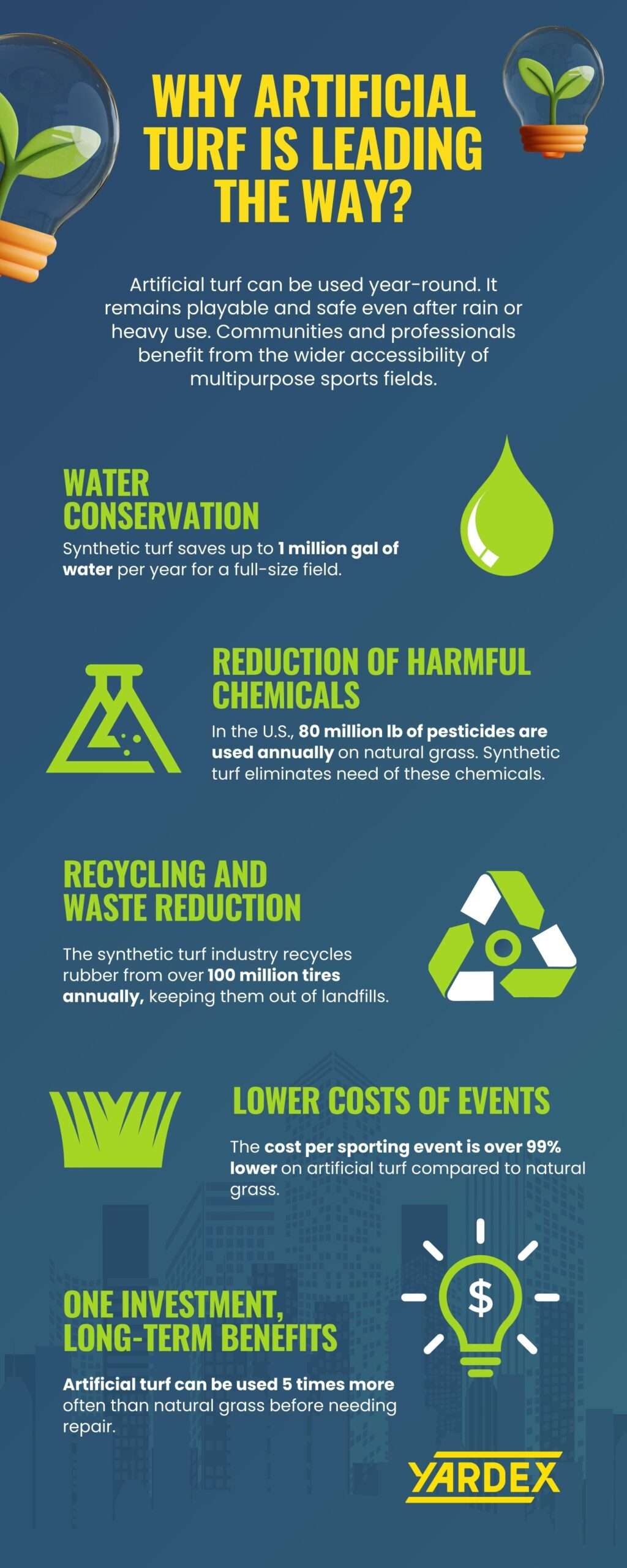
Water conservation
Synthetic turf significantly reduces water consumption. In fact, a full-size synthetic turf field can save up to 1 million gallons of water per year. For homeowners, switching their yards to artificial turf means saving about 70% on water costs.
Reduction of harmful chemicals
In the U.S., approximately 80 million pounds of pesticides are used annually to maintain natural grass. Synthetic turf eliminates the need for these harmful chemicals and reduces water pollution from runoff. This reduction is critical to protecting ecosystems and reducing health risks associated with pesticide exposure.
Modern artificial grass is made from raw materials that are free of toxins and harmful substances, and the production process is optimized to have as little impact on the environment as possible. Our production systems minimize gas emissions through advanced, sustainable production technologies and strict compliance with World Health Organization standards, ensuring our products are non-toxic and safe for children and pets.
Recycling and waste reduction
The synthetic turf industry makes an important contribution to recycling by using rubber crumb from recycled tires, keeping around more than 100 million tires out of landfills each year.
Latest production methods, as used in facilities like ours, promote a zero-waste strategy. We ensure that every aspect of our plant operations reduces our environmental impact. We recycle and reuse yarn waste by cooperating with recycling companies to separate polymer and rubber from grass trimmings. Additionally, we sell wooden pallets to wood recycling companies for reuse in the MDF industry.
Lower events costs
The cost per sporting event is significantly lower on artificial turf than on natural grass. In particular, the cost per event is over 99% lower on artificial turf than on natural grass. This spectacular difference highlights the economic benefits of artificial turf, particularly for schools, universities, local communities, and sports clubs.
One investment, long-term benefits
Artificial turf fields can be used 5 times more often than natural grass before needing any type of repair. This longevity results in lower maintenance costs and fewer interruptions for repairs, allowing for more consistent and reliable use for various activities.
At Yardex, we provide an 8-year guarantee for the use of artificial turf. However, it is possible to use the artificial grass for longer, even for 12-15 years, if you buy a high-quality surface and maintain it properly.
Artificial turf makes a compelling case for the future of landscaping and sports fields. It offers extensive environmental and economic benefits. By adopting synthetic turf, communities can enjoy a more active and healthier life by utilizing sports, landscaping, and recreational green spaces.
Notes: The purpose of this article is to promote artificial grass and show its value. Please see the sources of information we used to create this article:

